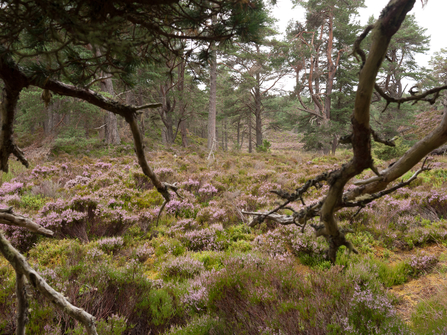The Government has committed to a number of positive steps towards realising the full potential of the Public Forest Estate (PFE) for wildlife and people.
The Wildlife Trusts are especially pleased to see that:
• The Public Forest Estate will continue to be managed by a public body. The Wildlife Trusts will continue to work closely in partnership to ensure the Public Forest Estate delivers for everyone, and with a strong focus on conservation.
• The Government has recognised the need to restore open habitats such as areas of lowland heathland and meadow, which are vitally important for wildlife.
• The value of woodlands to people’s health, education and wellbeing is beginning to be realised and that the Government sees the potential of Forest Schools.

